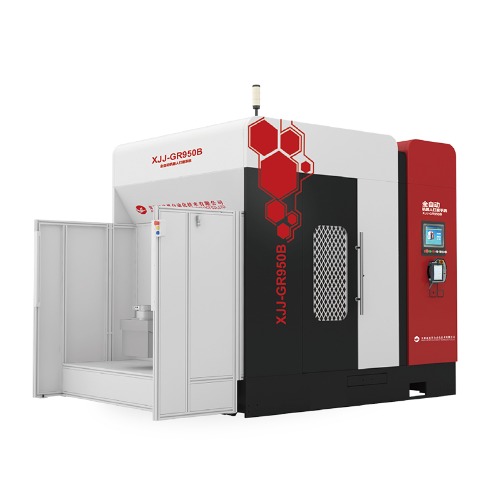Cast Steel Grinding Breakthrough: Neview Automatic’s GR Series Empowers Heavy Industry to Overcome High-Hardness Material Processing Barriers
In heavy machinery manufacturing, cast steel components are widely used in critical parts due to their high strength and wear resistance. Yet their high hardness (HB200–300) and complex structures pose significant post-processing challenges. Neview Automatic developed the GR Series intelligent grinding equipment to address these material properties, successfully resolving efficiency and precision challenges for heavy industry enterprises. This case study examines Neview Automatic’s technical breakthroughs through a cast steel flange grinding project for a major valve manufacturer (hereafter "the Customer").
As a core supplier of nuclear valves in China, the Customer produces over 20,000 cast steel flanges (DN1000+) annually, primarily using WCB carbon steel (HB240–260). Their original "manual + 5-axis dedicated machine" workflow faced three critical issues:
Low Efficiency: Daily output per station was only 15 pieces. Large-diameter flanges required 3 fixturing cycles and >8 hours of grinding, extending peak-season delivery by 40%.
Insufficient Precision: Sealing surface roughness (Ra) reached only 6.3μm, failing nuclear-grade valve requirements (Ra1.6μm). Rework rates hit 20%.
High Costs: Manual grinding consumed 12 grinding wheels/worker/day. Annual consumable costs exceeded ¥1.5M, with significant occupational hazards.
After technical benchmarking, the Customer selected Neview Automatic’s GR-950B single-arm, dual-station system. Its 420kg payload and ±0.02mm repeat positioning accuracy became the foundation for high-hardness material grinding.
Neview Automatic’s solution centered on the GR-950B, integrating three innovations:
(1) Ultra-Rigid Structural Design
Featuring a high-strength ductile iron body and reinforced robotic arm, the system withstands >200kg axial grinding force. Paired with a 16.5kW high-power spindle, it achieves 2.5× higher material removal rates on HB260 steel versus conventional equipment. Dual-spindle "rough-to-finish grinding" in one setup boosts daily output to 45 pieces per station while reducing fixturing from 3 cycles to 1.
(2) AI Error Compensation System
Laser displacement sensors scan workpiece surfaces in real-time, enabling adaptive grinding paths for ≤1.5mm casting deviations. Flange sealing surfaces now consistently achieve Ra1.2μm (33% above requirements), reducing rework to <3%.
(3) Flexible Force Control Technology
Torque-loop control enables adjustable grinding force (5–20N). "Constant-force flexible grinding" at vulnerable areas (e.g., bolt holes) slashed edge chipping rates from 12% to <1%. Tool life extended 3×, saving ¥900,000 annually in consumables.

The project deployed in two phases: Phase 1 installed 3 GR-950B units; Phase 2 integrated AI sorting lines for full-process automation:
Capacity & Quality: Annual output per line surged to 32,000 pieces (+200%). First-pass qualification rate for sealing surfaces rose from 75% to 99.1%, securing ASME B16.5 certification.
Cost Optimization: Labor costs reduced 60%; consumable expenses dropped from ¥1.5M to ¥600K. Changeover time shortened from 2 hours to 40 minutes, enabling flexible multi-spec production.
Safety & Environment: Fully sealed housing with pulse dust collection cut workshop particulates to 10mg/m³ (meets GBZ2.1). Workplace injury rate fell to 0.
The Customer’s Production Director stated:*"The GR-950B’s rigidity and AI compensation solved our DN1200 flange grinding challenges. Its 420kg payload increased large sprue remnant removal efficiency by nearly 4×—unthinkable with traditional equipment."*